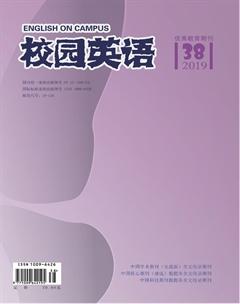A Research on Chinese-English Translation Strategies of Non-Subject Sentences in Government Reports
【Abstract】As China plays a more significant role, the translation of Chinese government report reflecting our work and other countries understanding of China needs to be more important. and the non-subject sentence in it causes great challenges to its translation.
【Key words】Government Reports; Non-Subject Sentence; Translation Strategies
【作者簡介】 高敏(1996.08-),辽宁大学,2018级英语笔译专业,硕士研究生。
1. The erview of the Non-Subject Sentence
The non-subject sentence, a common sentence structure in Chinese, is used for the description of actions or changes.[1] The research of it should focus on the verb in it and analyze the rest component of the sentence.
2. Strategies in the Translation of Non-Subject Sentences in Government Reports
The omitting of the subject can be attributed into the fact that Chinese is a parataxis language while English focuses more on “hypotaxis”. There are mainly five translation strategies for non-subject sentences.
2.1 Passive Voice Principle
There are the active voice and passive voice in English. In active voice sentences, the subject is the body of making movements and the object is the receiver of movements, while the passive voice in Chinese is hidden in the logical relationship of sentences. Such Chinese characters as “被”“给”“使”“让”“为”“遭”are used to express passivity.
For example:“制定国家监察法,用留置取代‘两规措施。” There are such verbs as “制定” and “用”. Translators should change Chinese active voice iinto English passive voice. Firstly, transferring the objects of Chinese into the subjects of English such as “国家监察法”“措施”. Secondly, turning the verbs from the active voice into the passive voice.
2.2 Adding Formal Subject “It”
In “it + be adj/noun + phrase + to do something/that” structure, “it” is used as the formal subject and the infinitive or the “that” clause is the real subject. When there is no appropriate noun or pronoun used as the subject, the pronoun “it” can be added as the formal subject.
For example:“建设现代化经济体系是我国发展的战略目标。” There are two nouns: “现代化经济体系” and “战略目标”, and the key verb is “建设”. With “it” as the formal subject, and the infinitive as the real subject, this sentence can be translated into: “It is Chinas strategical goal to establish a modernized economic system”.
Non-subject sentences appear frequently in such forms as “听说”,“人们认为”,“希望”,“据悉” ,etc. in Chinese. They can be translated into “It is said that”, “It is believed that”, “It is hoped that”, and “ It is reported that”. They are used to convey the opinions of speakers and to emphasize.
2.3 The Supplement of the Subject
Adding a subject “we” is the most common strategy in non-subject sentences translation in Chinese government reports. Sometimes, other pronouns are also feasible.
For example: “堅定不移贯彻新发展理念,坚决端正发展观念,坚决转变发展方式。” Three minor sentences share a common subject. Translators should add a subject: “we”, or the “CPC”. In government reports, “we” can refer to members of CPC or all Chinese people.
2.4 “There Be” Sentence Patterns
“There be” structure, representing existence, is called “existential sentence” in Chinese. The existential sentence belongs to the non-subject-predicate sentence and a kind of non-subject sentence. So the existential sentence can be translated into “there be” structure in English to express the meaning of:“有”,“存在”or several mottos in Chinese.
2.5 Imperative Sentence Structures
English is a language with the subject-predicate structure, and subject is absolutely necessary in English, but there is an exception: while translating request, command, slogan, prohibition in Chinese non-subject sentence, imperative sentence is a good approach.
3. Conclusion
Taking examples from the 19th CPC National Congress, this thesis analyzes the translation strategies of non-subject sentences. Translators need to understand the meaning of a sentence comprehensively and choose the appropriate strategies, making the non-subject sentences translation more correct.
References:
[1]王恩冕.大学英汉翻译教程 第四版[M].上海:对外经济贸易大学出版社,2015,8:63.

